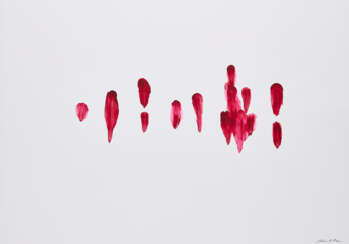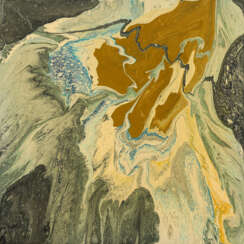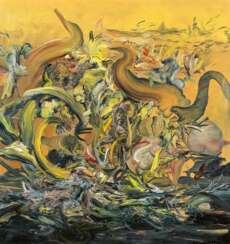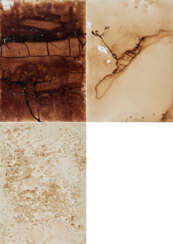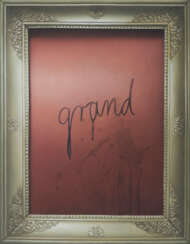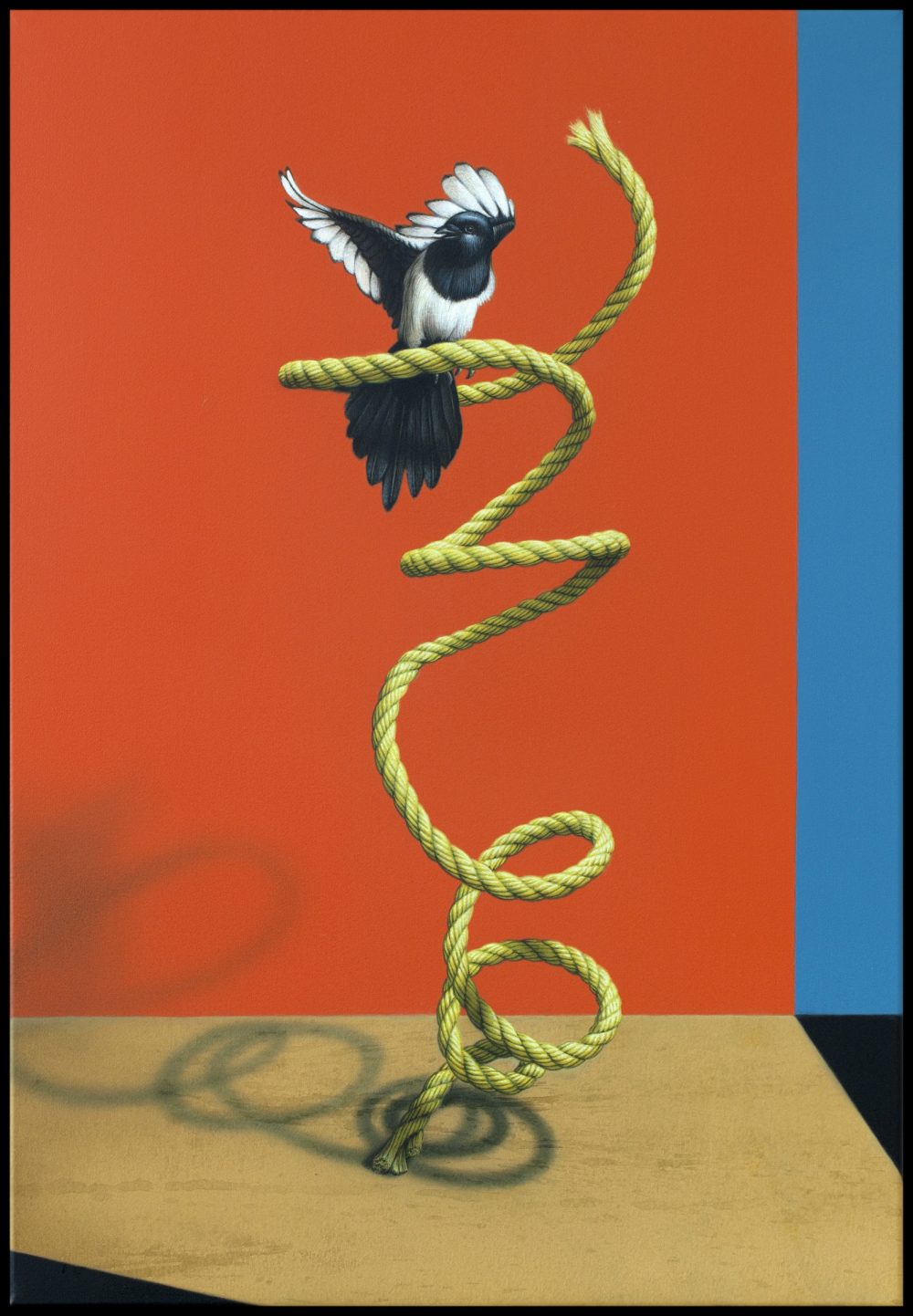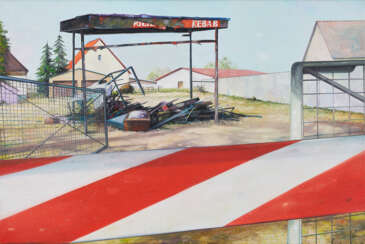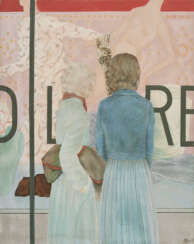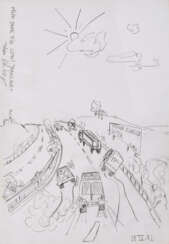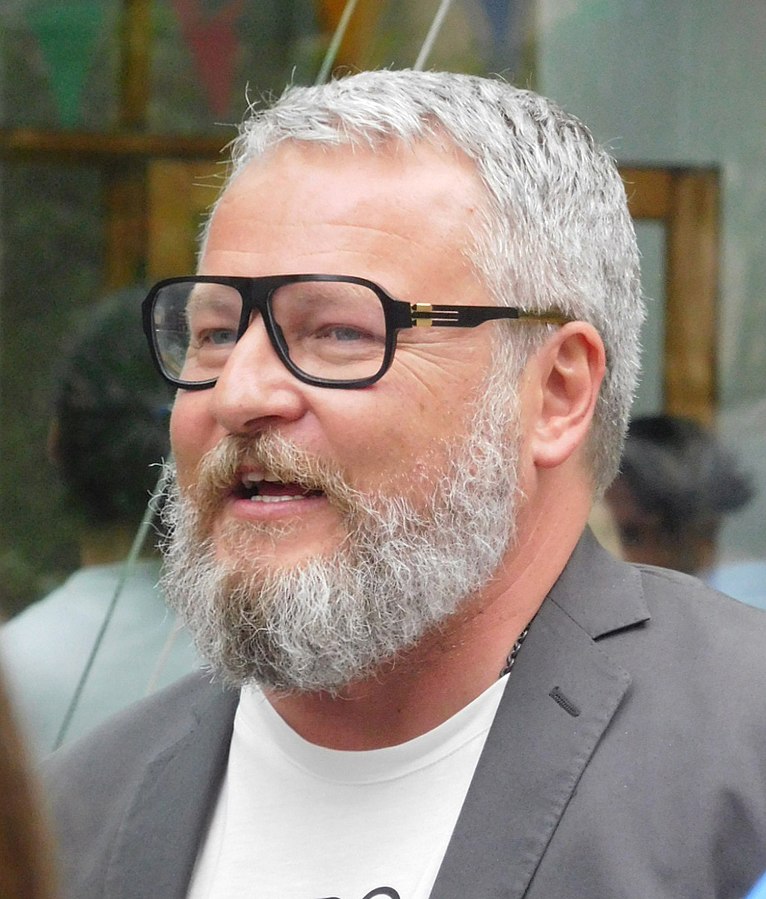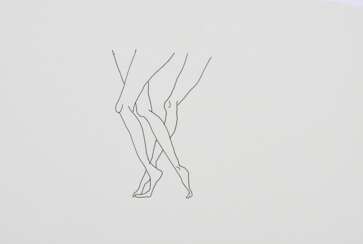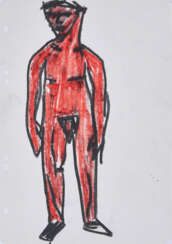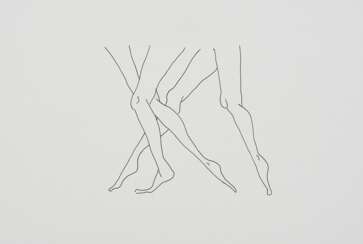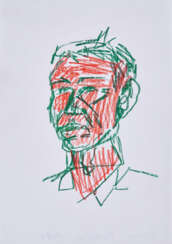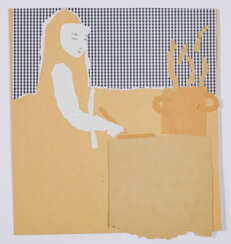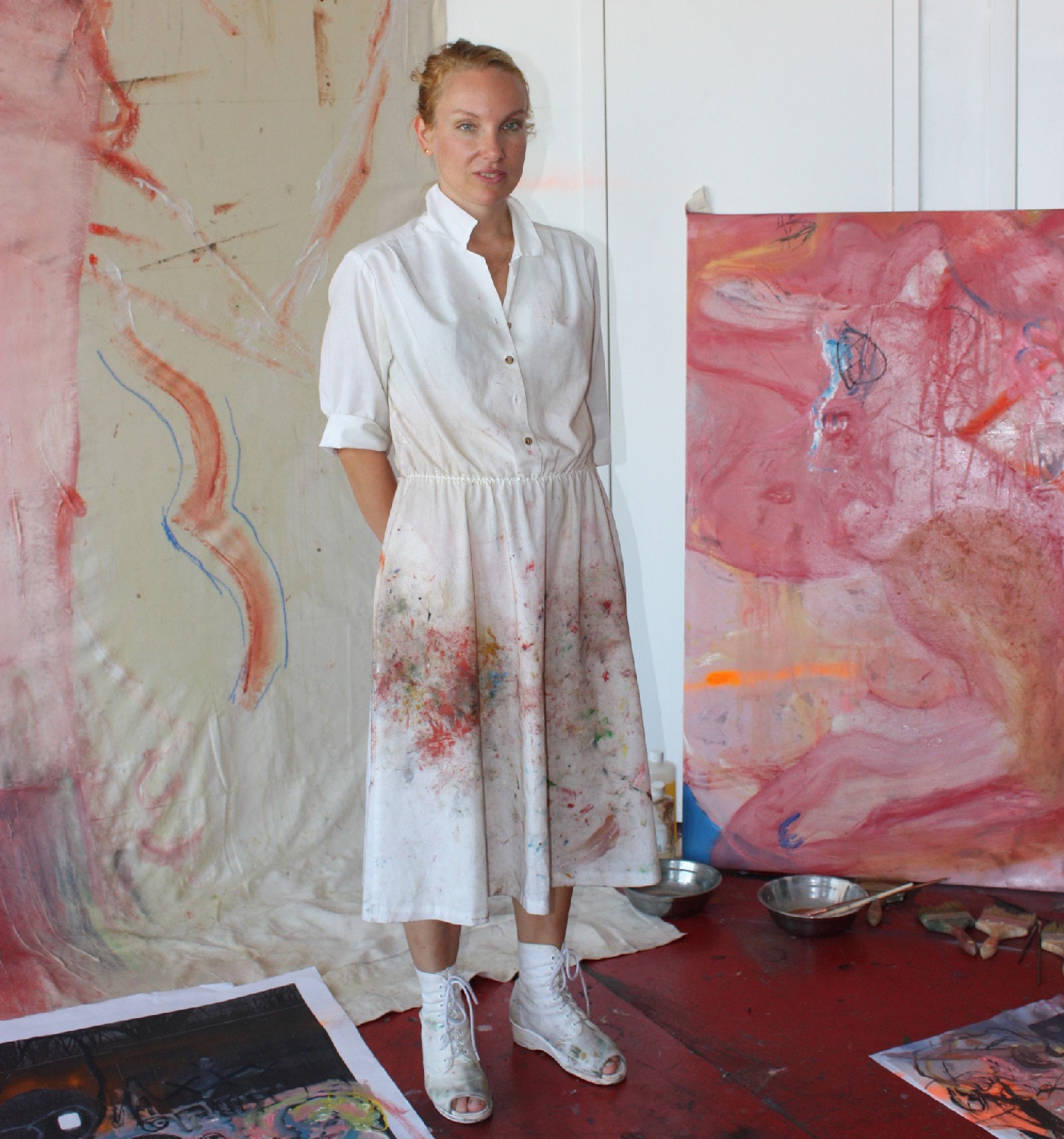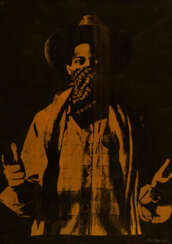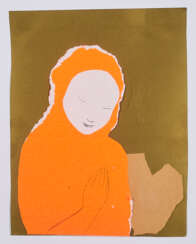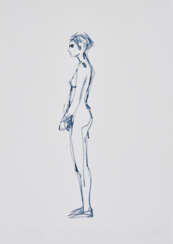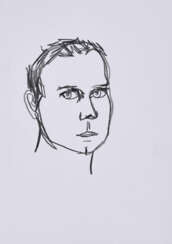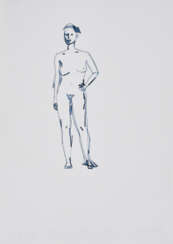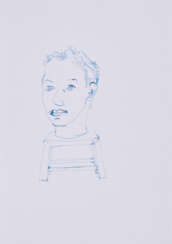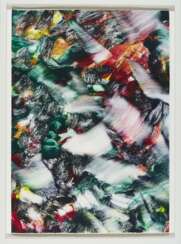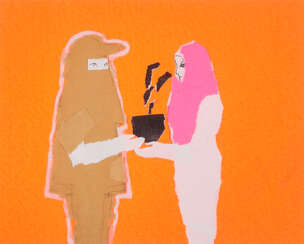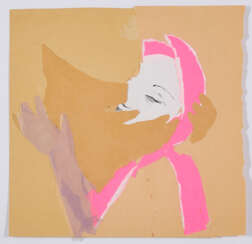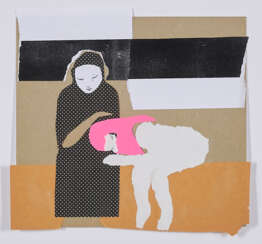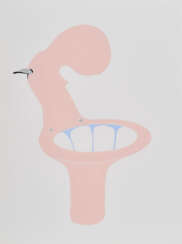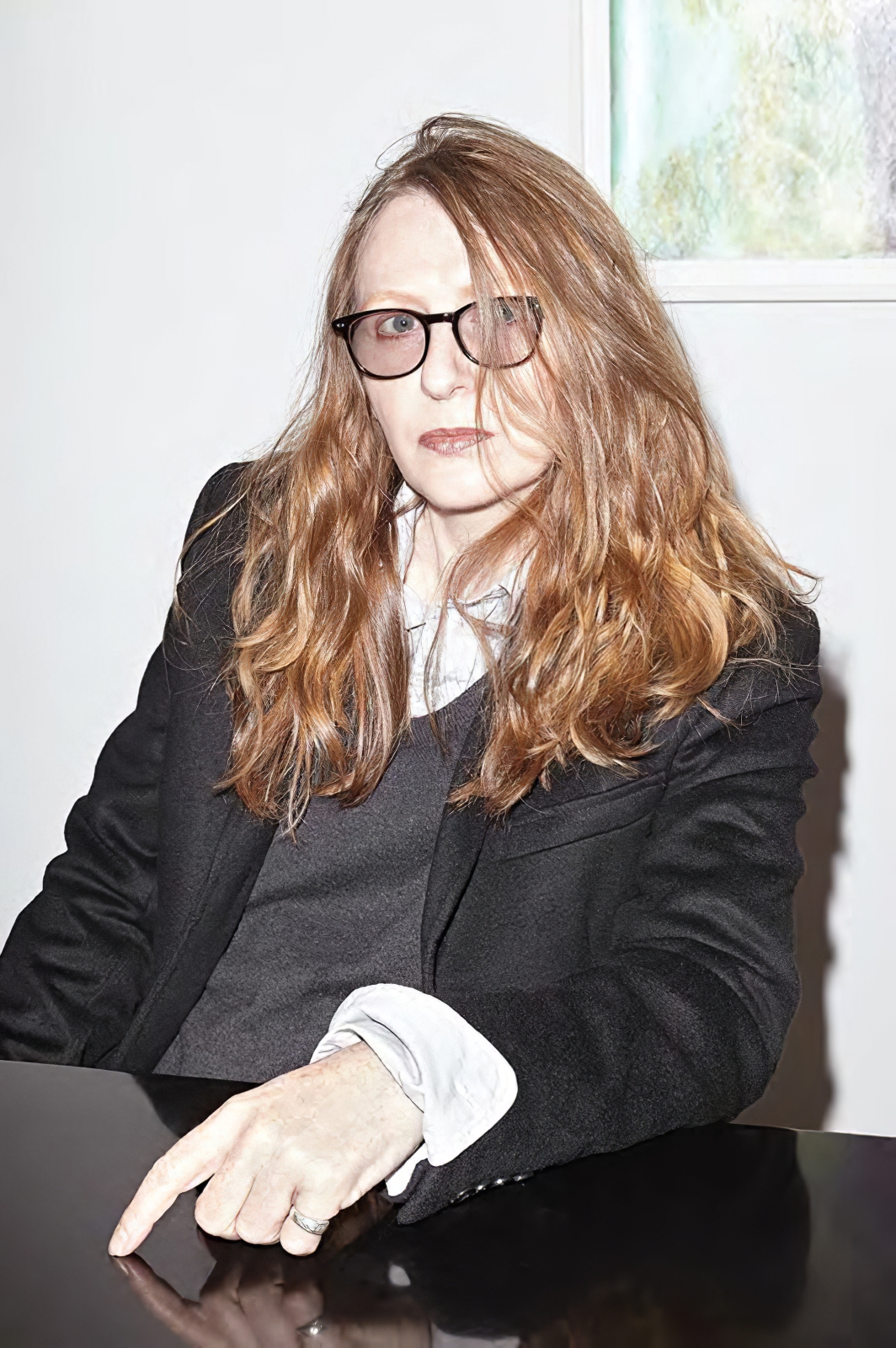
Modern and Contemporary art — A1119: Contemporary Curated
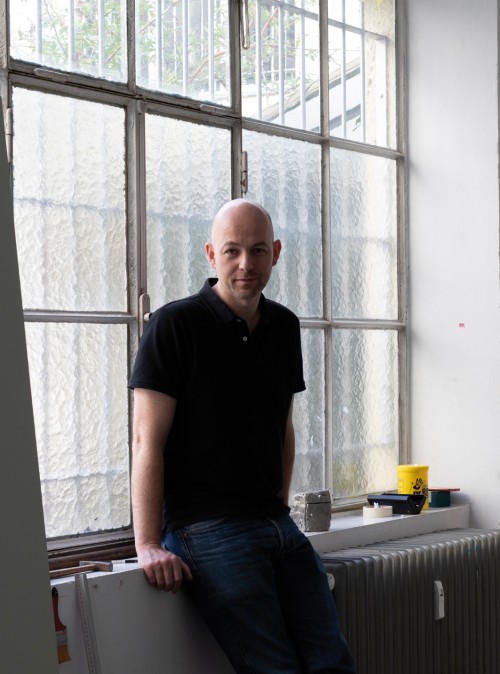
Benjamin Houlihan is a German painter, sculptor, and artist.
He studied at the Düsseldorf Academy of Art, where he is now a teacher. Since 2010, the artist has been transforming inconspicuous everyday objects, changing their material and size, into larger figures with a suggestive aura. In his wall paintings made with cottage cheese and food dyes, which Houlihan applies with his tongue, he also touches on the theme of painting.

Benjamin Houlihan is a German painter, sculptor, and artist.
He studied at the Düsseldorf Academy of Art, where he is now a teacher. Since 2010, the artist has been transforming inconspicuous everyday objects, changing their material and size, into larger figures with a suggestive aura. In his wall paintings made with cottage cheese and food dyes, which Houlihan applies with his tongue, he also touches on the theme of painting.
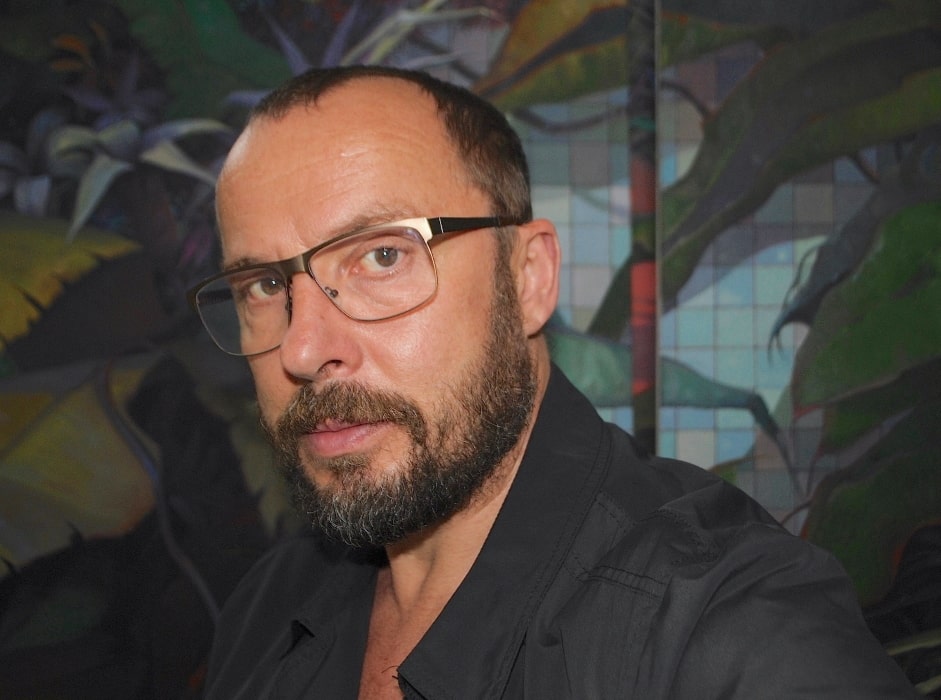
Jens Hausmann, a German painter, is renowned for his distinctive approach to painting, where architecture plays a central role, yet it's not the essence of his work. His paintings explore the nuanced relationship between architectural forms and the natural world, often depicting buildings and landscapes intertwined in a complex dance of culture and nature. Hausmann's work is characterized by a constructivist approach, where the real and the constructed realities blend seamlessly, creating scenarios that challenge the viewer's perception of space and environment.
Jens Hausmann's art is deeply influenced by modernism, yet it critiques its principles by showcasing buildings in emotionally arctic modernism being slowly reclaimed by nature. This juxtaposition reflects a critical view of modernist ideologies, suggesting a reevaluation of our relationship with the built environment and the natural world. His paintings don't just depict scenes; they invite viewers into a contemplative space where the boundaries between the interior and exterior blur, prompting reflections on the human condition and our impact on the planet.
His works are a testament to the complex interplay between humanity and nature, where even the most remote natural landscapes bear the marks of human activity. The artificiality of the colors in his landscapes and the absence of human figures underscore the theme of nature being "culturally contaminated" in the Anthropocene era. Jens Hausmann's paintings are not only visually striking but also intellectually stimulating, inviting viewers to ponder the deeper meanings and implications of his depicted scenarios.
For collectors and experts in art and antiques, Jens Hausmann's work offers a unique blend of architectural precision and philosophical depth, making his paintings highly sought after in both European and Brazilian art scenes. His ability to weave together elements of architecture, nature, and human influence creates a visually and conceptually rich tapestry that speaks to a wide audience.
To stay informed about Jens Hausmann's latest works and exhibitions, signing up for updates is highly recommended. This subscription will ensure that you are among the first to know about new sales and auction events related to his work, providing exclusive insights into the evolving world of contemporary art.
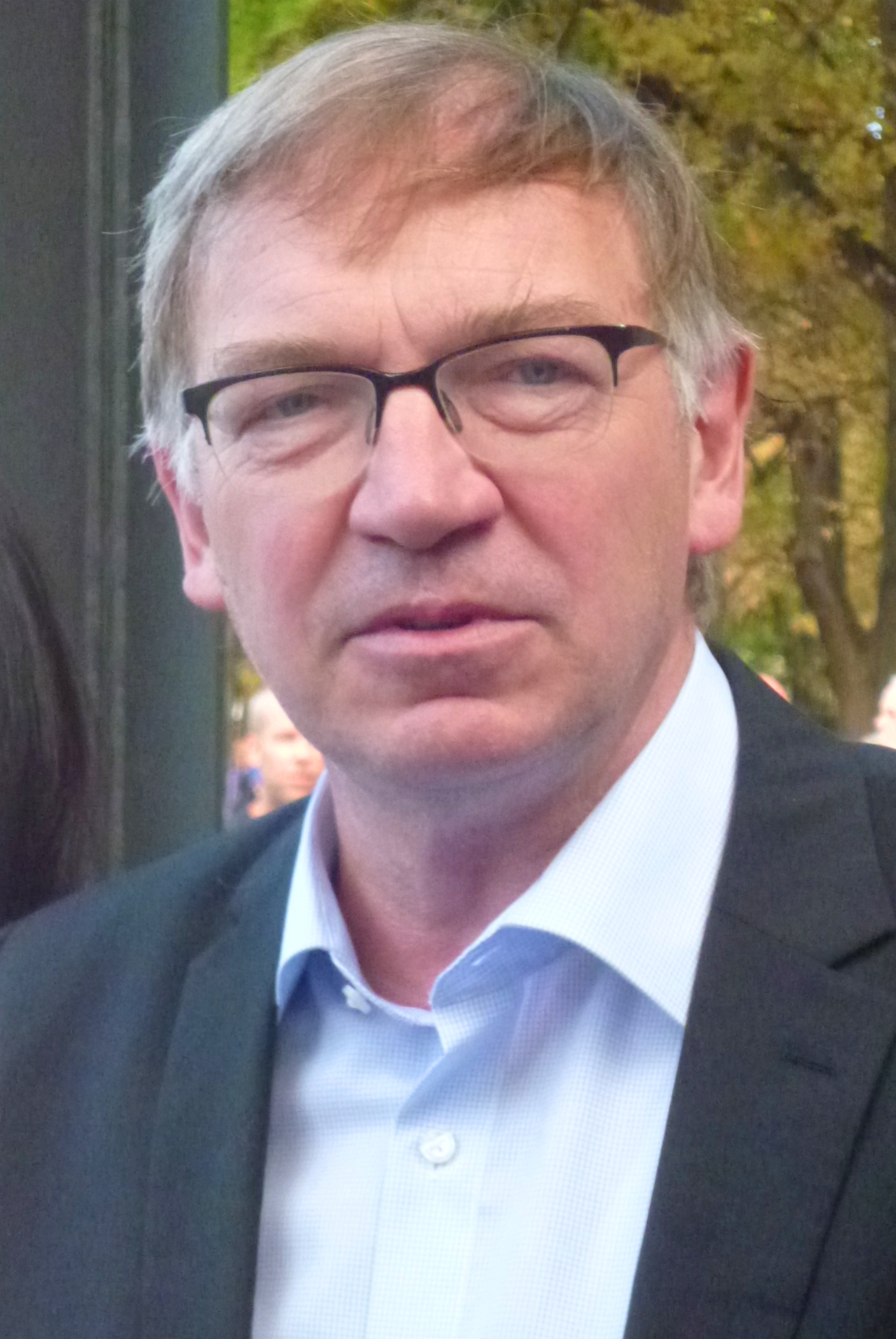
Stephan Balkenhol is a German artist known for his sculptures capturing the human form. Based in France and Germany, he specializes in wood sculptures, reliefs, drawings, and graphic techniques like lithography, woodcuts, and stencils. His distinct style features roughly carved and vibrantly painted wooden sculptures, often depicting people, animals, and architecture.
Balkenhol's subjects lack emotions, often gazing into emptiness, resulting in a distant and enigmatic aura. Wood is his primary medium, with softer woods allowing precise facial details while maintaining imperfections like chips, knots, and tool marks. The artist adds paint as a finishing touch, accentuating anatomy and vitality. The textured surfaces beneath the paint layer amplify the sense of life in Balkenhol's works.

Stephan Balkenhol is a German artist known for his sculptures capturing the human form. Based in France and Germany, he specializes in wood sculptures, reliefs, drawings, and graphic techniques like lithography, woodcuts, and stencils. His distinct style features roughly carved and vibrantly painted wooden sculptures, often depicting people, animals, and architecture.
Balkenhol's subjects lack emotions, often gazing into emptiness, resulting in a distant and enigmatic aura. Wood is his primary medium, with softer woods allowing precise facial details while maintaining imperfections like chips, knots, and tool marks. The artist adds paint as a finishing touch, accentuating anatomy and vitality. The textured surfaces beneath the paint layer amplify the sense of life in Balkenhol's works.

Stephan Balkenhol is a German artist known for his sculptures capturing the human form. Based in France and Germany, he specializes in wood sculptures, reliefs, drawings, and graphic techniques like lithography, woodcuts, and stencils. His distinct style features roughly carved and vibrantly painted wooden sculptures, often depicting people, animals, and architecture.
Balkenhol's subjects lack emotions, often gazing into emptiness, resulting in a distant and enigmatic aura. Wood is his primary medium, with softer woods allowing precise facial details while maintaining imperfections like chips, knots, and tool marks. The artist adds paint as a finishing touch, accentuating anatomy and vitality. The textured surfaces beneath the paint layer amplify the sense of life in Balkenhol's works.

Stephan Balkenhol is a German artist known for his sculptures capturing the human form. Based in France and Germany, he specializes in wood sculptures, reliefs, drawings, and graphic techniques like lithography, woodcuts, and stencils. His distinct style features roughly carved and vibrantly painted wooden sculptures, often depicting people, animals, and architecture.
Balkenhol's subjects lack emotions, often gazing into emptiness, resulting in a distant and enigmatic aura. Wood is his primary medium, with softer woods allowing precise facial details while maintaining imperfections like chips, knots, and tool marks. The artist adds paint as a finishing touch, accentuating anatomy and vitality. The textured surfaces beneath the paint layer amplify the sense of life in Balkenhol's works.

Stephan Balkenhol is a German artist known for his sculptures capturing the human form. Based in France and Germany, he specializes in wood sculptures, reliefs, drawings, and graphic techniques like lithography, woodcuts, and stencils. His distinct style features roughly carved and vibrantly painted wooden sculptures, often depicting people, animals, and architecture.
Balkenhol's subjects lack emotions, often gazing into emptiness, resulting in a distant and enigmatic aura. Wood is his primary medium, with softer woods allowing precise facial details while maintaining imperfections like chips, knots, and tool marks. The artist adds paint as a finishing touch, accentuating anatomy and vitality. The textured surfaces beneath the paint layer amplify the sense of life in Balkenhol's works.

Stephan Balkenhol is a German artist known for his sculptures capturing the human form. Based in France and Germany, he specializes in wood sculptures, reliefs, drawings, and graphic techniques like lithography, woodcuts, and stencils. His distinct style features roughly carved and vibrantly painted wooden sculptures, often depicting people, animals, and architecture.
Balkenhol's subjects lack emotions, often gazing into emptiness, resulting in a distant and enigmatic aura. Wood is his primary medium, with softer woods allowing precise facial details while maintaining imperfections like chips, knots, and tool marks. The artist adds paint as a finishing touch, accentuating anatomy and vitality. The textured surfaces beneath the paint layer amplify the sense of life in Balkenhol's works.
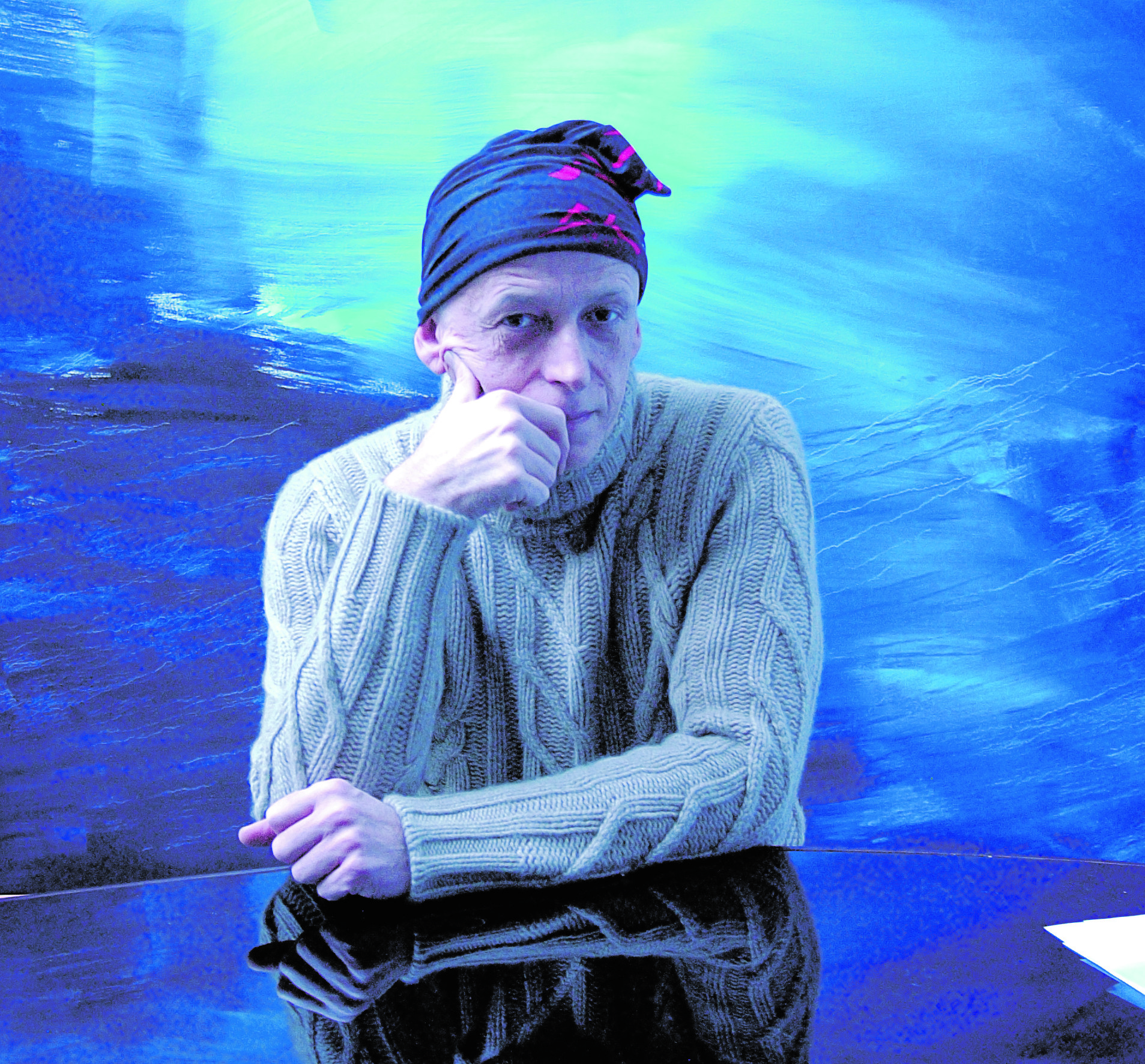
Herbert Brandl is one of the most famous Austrian expressionist artists. He achieved success through his large-format works.
Landscape as a theme was always dominant in his work, where pictorial abstraction and subjectivity alternate. Since the beginning of the new millennium, Brandl's passion for the monumentality of mountain landscapes has become increasingly evident. Using various formats and techniques, the artist has reinterpreted the theme of mountains, playing with expressive gestures, abstract colour spaces and massive forms.





